Reminiscing
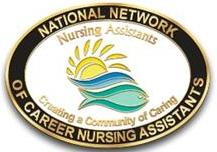 Since I was a caregiver for 13 years before the passing of the last of my parents and in-laws early in January of this year, I can tell you that being a caregiver, or a CNA is a big job that often gets very little recognition. Many people don’t really have any desire to do such a job, but because they remain in caregiving positions, Career Nursing Assistants provide predictability and stability to care, which in turn enhances the feeling of security for our aging, frail, or chronically challenged population. CNAs also bring wisdom, patience, humor, and a general attitude of caring to the daily lives of the residents in their care.
Since I was a caregiver for 13 years before the passing of the last of my parents and in-laws early in January of this year, I can tell you that being a caregiver, or a CNA is a big job that often gets very little recognition. Many people don’t really have any desire to do such a job, but because they remain in caregiving positions, Career Nursing Assistants provide predictability and stability to care, which in turn enhances the feeling of security for our aging, frail, or chronically challenged population. CNAs also bring wisdom, patience, humor, and a general attitude of caring to the daily lives of the residents in their care.
Today is National Career Nursing Assistants Day. It is a day founded by the National Network of Career Nursing Assistants to promote recognition, education, research, advocacy and peer support development for nursing assistants in nursing homes and other long-term care settings. This is especially close to my heart for a number of reasons, such as the care given to my parents and in-law, but  most recently because my daughter, Corrie Petersen is now a CNA working toward her degree as a nurse. She currently works at Elkhorn Rehabilitation Hospital in Casper, Wyoming, and we couldn’t be more proud of her. Having been a caregiver, I can tell you that the work that CNAs do is vital to the well-being of their patients, whether in a nursing home facility, a physical therapy facility (which is where my daughter works), at the patient’s home, or in hospice facilities.
most recently because my daughter, Corrie Petersen is now a CNA working toward her degree as a nurse. She currently works at Elkhorn Rehabilitation Hospital in Casper, Wyoming, and we couldn’t be more proud of her. Having been a caregiver, I can tell you that the work that CNAs do is vital to the well-being of their patients, whether in a nursing home facility, a physical therapy facility (which is where my daughter works), at the patient’s home, or in hospice facilities.
According to the National Network of Career Nursing Assistants, “Nursing Assistants are the best thing about ‘caring.'” Nursing Assistants “Brighten Lives” according to Dawn Silva, CNA, New Hampshire, and member “Safe Patient Handling” committee. As more and more people are living longer, caring for the elderly has become more and more vital. With that care comes an increased focus on the people who care for the elderly…largely 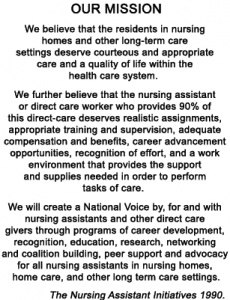 nurses and CNAs. It’s a noble occupation. While the work is hard, and what some might consider demeaning, the sense of peace it gives the patients makes being a CNA worth it.
nurses and CNAs. It’s a noble occupation. While the work is hard, and what some might consider demeaning, the sense of peace it gives the patients makes being a CNA worth it.
Every CNA is a blessing to those they care for and the nursing staff they work with. They support the facility they work in and the patients they care for. They bring a smile to the faces of their patients, and the patients are grateful for the help they receive. I don’t know of a facility out there that could run effectively without its CNAs, and I know how hard it is when a facility is shorthanded on CNAs. It makes everything harder for everyone working there, and especially harder on the patients who depend on them every day. Today is National Career Nursing Assistants Day. I am very proud of my daughter, Corrie Petersen, and of all the other CNAs I know. Thank you all for the work you do. Have a wonderful day, each and every one of you!! Happy National Career Nursing Assistants Day!!
 My nephew, Garrett Stevens is a busy man these days. Taking after his grandpa, my dad, Allen Spencer, Garrett became a welder, and when his wife Kayla was hired at the Wyoming Mental Health Clinic, in Sheridan, Wyoming, they moved from Casper to Sheridan. Garrett was quickly hired by Craftco Metals Services as a welder. Garrett really loves his job and the people he works with, and they really love him and his work too. He is one of their go-to people now, and therefore he is getting lots of overtime. He does out of town work in Rock Springs, Laramie, Wright, Gillette. It means being away form home some, but because Garrett is now the expectant father of a baby girl, who is due to make her appearance around August 22, the extra money has come in handy as he and Kayla prepare for their baby.
My nephew, Garrett Stevens is a busy man these days. Taking after his grandpa, my dad, Allen Spencer, Garrett became a welder, and when his wife Kayla was hired at the Wyoming Mental Health Clinic, in Sheridan, Wyoming, they moved from Casper to Sheridan. Garrett was quickly hired by Craftco Metals Services as a welder. Garrett really loves his job and the people he works with, and they really love him and his work too. He is one of their go-to people now, and therefore he is getting lots of overtime. He does out of town work in Rock Springs, Laramie, Wright, Gillette. It means being away form home some, but because Garrett is now the expectant father of a baby girl, who is due to make her appearance around August 22, the extra money has come in handy as he and Kayla prepare for their baby. 
They were also able to buy Garrett a 2006 ½ ton GMC Denali pickup, which he has wanted for a while now. Garrett was also given his grandpa’s old pickup when he passed away, and he has just moved it to Sheridan so that he can work on it…if he has any spare time, that is. In addition to the pickup and his job, Garrett is busy preparing their house for the arrival of their daughter. With a new addition to the family, there is always lots to do to prepare. Bedrooms often need to be painted, and baby furniture must be put together. A baby shower was held for Garrett’s wife, Kayla a week ago, so now there is a lot to be organized, and a crib to put together, but then, I expect that Garrett has already done  that job. Garrett has loved kids for as long as I’ve known him…all his life, so I’m sure that getting a child of his own is really a dream come true for Garrett and Kayla. And, the rest of us can’t wait to meet her either!! Garrett will be a great dad. It is a job he has practiced for most of his life.
that job. Garrett has loved kids for as long as I’ve known him…all his life, so I’m sure that getting a child of his own is really a dream come true for Garrett and Kayla. And, the rest of us can’t wait to meet her either!! Garrett will be a great dad. It is a job he has practiced for most of his life.
In his “spare” time, Garrett loves most sports. He loves to hunt, fish, and watch just about any sport on television. He and Kayla also enjoy walking their dog on any of the local trails. Life is pretty busy these, but also very happy. They will be even more content when their baby girl gets here. Then they will really be rockin’ the overtime. Today is Garrett’s birthday. Happy birthday Garrett!! Have a great day!! We love you!!
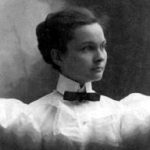 In the old west, few women went on to get a higher education, and even fewer became doctors. It was thought of as a man’s occupation, and the few women who dared to go into that field, were often looked at with distrust, and even disdain. People thought that women belonged in the home raising a family. Some didn’t even attempt to hide the dislike of women in medicine. Susan Anderson, MD was born in Fort Wayne, Indiana in 1870. Her family moved to the mining camp of Cripple Creek, Colorado during her childhood. In 1893, Anderson left Cripple Creek to attend medical school at the University of Michigan. She graduated in 1897. During her time in medical school, Anderson contracted tuberculosis and soon returned to her family in Cripple Creek, where she set up her first practice.
In the old west, few women went on to get a higher education, and even fewer became doctors. It was thought of as a man’s occupation, and the few women who dared to go into that field, were often looked at with distrust, and even disdain. People thought that women belonged in the home raising a family. Some didn’t even attempt to hide the dislike of women in medicine. Susan Anderson, MD was born in Fort Wayne, Indiana in 1870. Her family moved to the mining camp of Cripple Creek, Colorado during her childhood. In 1893, Anderson left Cripple Creek to attend medical school at the University of Michigan. She graduated in 1897. During her time in medical school, Anderson contracted tuberculosis and soon returned to her family in Cripple Creek, where she set up her first practice.
Anderson spent the next three years sympathetically tending to patients, but her father insisted that Cripple Creek, a lawless mining town at the time. He felt like it was no place for a woman, so Anderson moved to Denver. In Denver, she had a tough time securing patients. The people in Denver were reluctant to see a woman doctor. She then moved to Greeley, Colorado, where she worked as a nurse for six years. Somehow, people accepted a woman as a nurse, probably because they looked at it as just following the orders of the doctor, who was ultimately in charge.
Her tuberculosis got worse during this time, so she felt she needed a more cold and dry climate. She made the 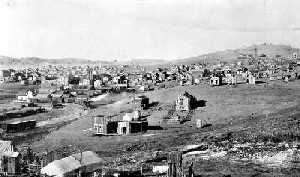 decision to move to Fraser, Colorado in 1907. Fraser’s elevation of over 8,500 feet, definitely made the area cold and dry. Anderson was most concerned with getting her disease under control and didn’t open a practice. She didn’t even tell people that she was a doctor. Nevertheless, the word soon got out and the locals began to ask for her advice on various ailments, which soon led to her practicing her skills once again. Her reputation spread as she treated families, ranchers, loggers, railroad workers, and even an occasional horse or cow, which was not uncommon at the time. The vast majority of her patients required her to make house calls, though she never owned a horse or a car. Instead, she dressed in layers, wore high hip boots, and trekked through deep snows and freezing temperatures to reach her patients. Now that is dedication…especially for a woman trying to recover from Tuberculosis.
decision to move to Fraser, Colorado in 1907. Fraser’s elevation of over 8,500 feet, definitely made the area cold and dry. Anderson was most concerned with getting her disease under control and didn’t open a practice. She didn’t even tell people that she was a doctor. Nevertheless, the word soon got out and the locals began to ask for her advice on various ailments, which soon led to her practicing her skills once again. Her reputation spread as she treated families, ranchers, loggers, railroad workers, and even an occasional horse or cow, which was not uncommon at the time. The vast majority of her patients required her to make house calls, though she never owned a horse or a car. Instead, she dressed in layers, wore high hip boots, and trekked through deep snows and freezing temperatures to reach her patients. Now that is dedication…especially for a woman trying to recover from Tuberculosis.
During the many years that “Doc Susie,” which she familiarly became known as, practiced in the high mountains of Grand County, one of her busiest times was during the Influenza Pandemic of 1918-1919. Like people all over the world, Fraser locals also became sick in great numbers, and Dr Anderson found herself rushing from one deathbed to the next.
Another busy time for her was when the six-mile Moffat Tunnel was being built through the Rocky Mountains. Not long after construction began, she found herself treating numerous men who were injured during 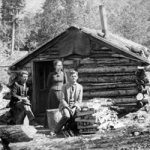 construction. During this time, she was also asked to become the Grand County Coroner, a position that enabled her to confront the Tunnel Commission regarding working conditions and accidents. She hoped to make a difference. In the five years it took to complete the tunnel, there were about 19 who died and hundreds injured.
construction. During this time, she was also asked to become the Grand County Coroner, a position that enabled her to confront the Tunnel Commission regarding working conditions and accidents. She hoped to make a difference. In the five years it took to complete the tunnel, there were about 19 who died and hundreds injured.
Unlike physicians of today, Dr Anderson never became “rich” practicing her skills. Im not even sure you would say she made a middle class living, because she was often paid in firewood, food, services, and other items that could be bartered. Doc Susie continued to practice in Fraser until 1956. She died in Denver on April 16, 1960 and was buried in Cripple Creek, Colorado.
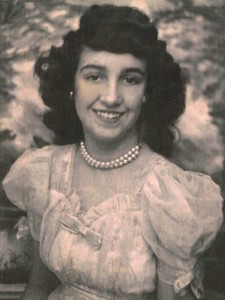 My Aunt Virginia is the oldest living child of my grandparents, George and Hattie Byer. She spent time working for the telephone company, and also for the State of Wyoming. I remember seeing her sometimes all dressed up for work, and thinking that she looked so sophisticated and beautiful. I wanted to dress up like her so I could like a real lady too. I have spent many years in the working world too, where I have always remembered just how nice my Aunt Virginia looked. I have tried to keep that picture of the sophisticated lady that she always was in my mind in my own career. I have felt that a successful working woman was always stylish, whether wearing a dress or pants. For some reason that stuck out more to me than the actual work the woman did. I suppose that was the little girl in me remembering how stylish Aunt Virginia was.
My Aunt Virginia is the oldest living child of my grandparents, George and Hattie Byer. She spent time working for the telephone company, and also for the State of Wyoming. I remember seeing her sometimes all dressed up for work, and thinking that she looked so sophisticated and beautiful. I wanted to dress up like her so I could like a real lady too. I have spent many years in the working world too, where I have always remembered just how nice my Aunt Virginia looked. I have tried to keep that picture of the sophisticated lady that she always was in my mind in my own career. I have felt that a successful working woman was always stylish, whether wearing a dress or pants. For some reason that stuck out more to me than the actual work the woman did. I suppose that was the little girl in me remembering how stylish Aunt Virginia was.
Aunt Virginia has always been a tiny little lady. I don’t recall her ever gaining any weight. I don’t know is she ever worked out, or if being tiny just came naturally. As she grew older, I was often amazed at how tiny she was. As kids grow, they are often 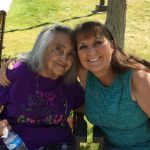 amazed at the fact that the adults they thought were so big, really aren’t that big at all. and suddenly, before we know it, the kids are taller than the adults. That is exactly what happened with Aunt Virginia and every kid in the family.
amazed at the fact that the adults they thought were so big, really aren’t that big at all. and suddenly, before we know it, the kids are taller than the adults. That is exactly what happened with Aunt Virginia and every kid in the family.
These days, I find myself feeling surprised at the fact that my Aunt Virginia is 88 years old, but that is exactly where she is in life. Nevertheless, she is still the sweet and loving, beautiful lady I have always known and loved very much. She may not get around as easily as she used to, but she is still enjoying life, and still her slim self. Today id Aunt Virginia’s 88th birthday. Happy birthday Aunt Virginia!! Have a great day!! We love you!!
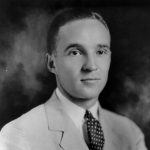
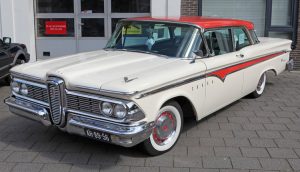 Despite having a domineering father, who was never pleased with anything he did, Edsel Ford, the son of the founder of Ford Motors is mainly remembered for the Edsel, a failed 1958-60 car model. In reality, he was one of the masterminds of the Allied victory in World War II. Against the wishes of his father, Edsel Ford telephones William Knudsen of the U.S. Office of Production Management on June 12, 1940, to confirm Ford Motor Company’s acceptance of Knudsen’s proposal to manufacture 9,000 Rolls-Royce-designed engines to be used in British and United States airplanes. In all, they would build, 9,000 B-24 Liberator bombers, 278,000 Jeeps, 93,000 military trucks, 12,000 armored cars, 3,000 tanks, and 27,000 tank engines, but it was not without a few stumbling blocks. Edsel and Charles Sorensen, Ford’s production chief, had apparently gotten the go-ahead from Henry Ford by June 12, when Edsel telephoned Knudsen to confirm that Ford would produce 9,000 Rolls-Royce Merlin airplane engines (6,000 for the RAF and 3,000 for the U.S. Army). However, as soon as the British press announced the deal, Henry Ford personally and publicly canceled it, telling a reporter: “We are not doing business with the British government or any other government.”
Despite having a domineering father, who was never pleased with anything he did, Edsel Ford, the son of the founder of Ford Motors is mainly remembered for the Edsel, a failed 1958-60 car model. In reality, he was one of the masterminds of the Allied victory in World War II. Against the wishes of his father, Edsel Ford telephones William Knudsen of the U.S. Office of Production Management on June 12, 1940, to confirm Ford Motor Company’s acceptance of Knudsen’s proposal to manufacture 9,000 Rolls-Royce-designed engines to be used in British and United States airplanes. In all, they would build, 9,000 B-24 Liberator bombers, 278,000 Jeeps, 93,000 military trucks, 12,000 armored cars, 3,000 tanks, and 27,000 tank engines, but it was not without a few stumbling blocks. Edsel and Charles Sorensen, Ford’s production chief, had apparently gotten the go-ahead from Henry Ford by June 12, when Edsel telephoned Knudsen to confirm that Ford would produce 9,000 Rolls-Royce Merlin airplane engines (6,000 for the RAF and 3,000 for the U.S. Army). However, as soon as the British press announced the deal, Henry Ford personally and publicly canceled it, telling a reporter: “We are not doing business with the British government or any other government.”
Unlike other automakers, Ford had already built a successful airplane in the 1920s called the Tri-Motor. That fact made them the logical choice when the war effort needed more planes. In two meetings in late May and early June 1940, Knudsen and Edsel Ford agreed that Ford would manufacture the new fleet of aircraft for the RAF on an expedited basis. The one significant obstacle was Edsel’s father Henry Ford, who still retained complete control over the company he founded, even though he had turned the figurehead control over to his son. Henry Ford was well known for his opposition to the possible U.S. entry into World War II, so it would be up to Edsel to convince him that it was necessary.
According to Douglas Brinkley’s biography of Ford, “Wheels for the World,” Henry Ford had in effect already accepted a contract from the German government. The Ford subsidiary Ford-Werke in Cologne was doing business with the Third Reich at the time, which Ford’s critics took as proof that he was concealing a pro-German bias behind his claims to be a man of peace. Nevertheless, as U.S. entry into the war became more of 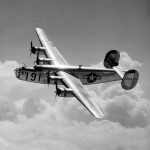
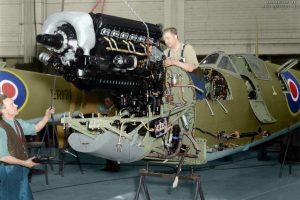 a certainty, Ford reversed his position, and the company opened a large new government-sponsored facility at Willow Run, Michigan in May of 1941, for the purposes of manufacturing the B-24E Liberator bombers for the Allied war effort. Ford Motor plants also produced a great deal of other war materiel during World War II, including a variety of engines, trucks, jeeps, tanks and tank destroyers. The production needs met by Ford Motor Company during World War II were instrumental in the Allied victory in that war.
a certainty, Ford reversed his position, and the company opened a large new government-sponsored facility at Willow Run, Michigan in May of 1941, for the purposes of manufacturing the B-24E Liberator bombers for the Allied war effort. Ford Motor plants also produced a great deal of other war materiel during World War II, including a variety of engines, trucks, jeeps, tanks and tank destroyers. The production needs met by Ford Motor Company during World War II were instrumental in the Allied victory in that war.
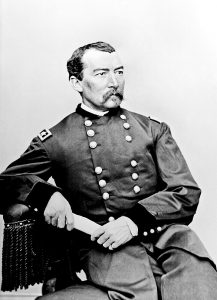
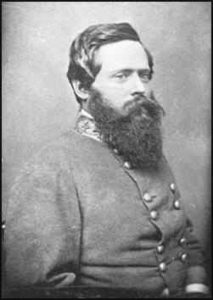 During the Civil War, rail lines were crucial for moving supplies from one place to another. The different sides often tried to waylay the trains, derail the trains, or even destroy the rails. On June 10, 1864, a Confederate cavalry intercepted General Phillip Sheridan’s Union cavalry while they were trying to destroy a rail line near Trevilian Station, Virginia. The ensuing battle lasted two days before the Confederates were finally able to drive off the Union cavalry from the station, with minimal damage to a precious supply line.
During the Civil War, rail lines were crucial for moving supplies from one place to another. The different sides often tried to waylay the trains, derail the trains, or even destroy the rails. On June 10, 1864, a Confederate cavalry intercepted General Phillip Sheridan’s Union cavalry while they were trying to destroy a rail line near Trevilian Station, Virginia. The ensuing battle lasted two days before the Confederates were finally able to drive off the Union cavalry from the station, with minimal damage to a precious supply line.
After the Confederate victory at the Battle of Cold Harbor in June 1864, in which over 15,000 combined casualties fell during the nearly two-week fight, Union General Ulysses S. Grant dispatched his cavalry commander, General Phillip Sheridan to ride towards Charlottesville and cut the Virginia Central Railroad. The line was supplying Robert E. Lee’s Army of Northern Virginia. Lee’s Army was engaged in a life-or-death struggle with Grant’s Army of the Potomac, in the areas of Richmond and Petersburg.
Sheridan turned north to skirt around Richmond and headed toward Charlottesville, which was 60 miles northwest of Richmond. Unfortunately, Sheridan’s move was far from secret, and General Wade Hampton, commander of the Confederate cavalry, set out to intercept the Union cavalry. On the morning of June 11, Union General George Custer’s men attacked Hampton’s supply train near Trevilian Station. Although they scored an initial success, Custer soon found himself almost completely surrounded by the Confederate Cavalry. Custer formed his men into a triangle and made several counterattacks before Sheridan came to his rescue in the late afternoon, taking 500 Southern prisoners in the process. 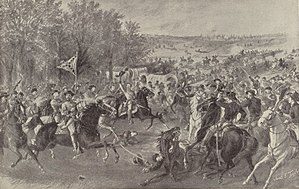
The struggle continued the next day. With his ammunition running low and his cavalry dangerously far from its supply line, Sheridan eventually withdrew his force and returned to the Army of the Potomac. The Union Cavalry tore up about five miles of rail line, but the damage was relatively light for the high number of casualties. Sheridan lost 735 men compared with nearly 1,000 for Hampton. But the Confederates had driven off the Union cavalry and had kept the damage to railroad to a minimum…not that it would make a difference in the outcome of the Civil War.
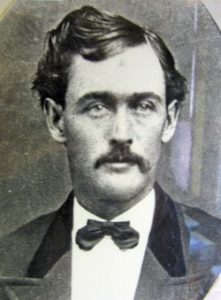 Many men helped to tame the wild west, but unfortunately things didn’t always go exactly as the lawmen planned. Billy Daniels was a pretty typical lawman, but like the thousands of courageous young men and women who helped tame the Wild West, whose names and stories have since been largely forgotten, Billy was not a well remembered lawman. For every Wild Bill Hickok or Wyatt Earp, who have been immortalized by the dramatic exaggerations of dime novelists and journalists, the West had dozens of men like Billy Daniels, who quietly did their duty with little fanfare, celebration, or thanks.
Many men helped to tame the wild west, but unfortunately things didn’t always go exactly as the lawmen planned. Billy Daniels was a pretty typical lawman, but like the thousands of courageous young men and women who helped tame the Wild West, whose names and stories have since been largely forgotten, Billy was not a well remembered lawman. For every Wild Bill Hickok or Wyatt Earp, who have been immortalized by the dramatic exaggerations of dime novelists and journalists, the West had dozens of men like Billy Daniels, who quietly did their duty with little fanfare, celebration, or thanks.
On December 8, 1883, five desperadoes led by Daniel “Big Dan” Dowd, rode into the booming mining town of Bisbee, Arizona. Dowd had heard that the $7,000 payroll of the Copper Queen Mine would be in the vault at the Bisbee General Store. He had planned to surprise the store owners, and make off with the payroll, but things didn’t go exactly as planned. When the outlaws barged into the store with their guns drawn, demanding the payroll, they discovered, to Dowd’s disappointment, that they were too early. The payroll hadn’t arrived yet. The outlaws quickly gathered up what money there was, somewhere between $900 to $3,000, and took valuable rings and watches from the customers who just happened to be in the store. After the robbery, for reasons that are unclear…but possibly, anger…the robbery turned into a slaughter. When the five desperadoes rode away, they left behind four dead or dying people, including Deputy Sheriff Tom Smith and a Bisbee woman named Anna Roberts.
The people of Arizona were stunned. The people had cooperated with the outlaws. There was no reason to kill 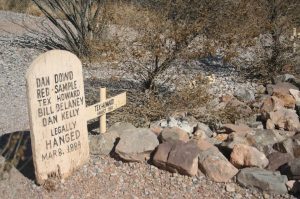 those people. The killings were a completely senseless show of brutality. The newspapers called it the “Bisbee Massacre.” The sheriff quickly organized citizen posses to track down the killers, placing Deputy Sheriff Billy Daniels at the head of one. Unfortunately, the posses soon ran out of clues and the trail grew cold. Most of the citizen members gave up, but not Daniels. He stubbornly continued the pursuit alone. Daniels eventually learned the identities of the five men from area ranchers and began to track them down one by one.
those people. The killings were a completely senseless show of brutality. The newspapers called it the “Bisbee Massacre.” The sheriff quickly organized citizen posses to track down the killers, placing Deputy Sheriff Billy Daniels at the head of one. Unfortunately, the posses soon ran out of clues and the trail grew cold. Most of the citizen members gave up, but not Daniels. He stubbornly continued the pursuit alone. Daniels eventually learned the identities of the five men from area ranchers and began to track them down one by one.
Daniels found one of the killers in Deming, New Mexico, and arrested him. He then learned from a Mexican informant that the gang leader, Big Dan Dowd, had fled south of the border to a hideout at Sabinal, Chihuahua. Daniels went under cover, disguising himself as an ore buyer. He tricked Dowd into a meeting and took him prisoner. A few weeks later, Daniels returned to Mexico and arrested another of the outlaws. Other law officers apprehended the remaining two members of the gang. A jury in Tombstone, Arizona, quickly convicted all five men. They were sentenced to be hanged simultaneously. As the noose was fitted around his neck on the five-man gallows, Big Dan reportedly muttered, “This is a regular killing machine.”
Daniels ran for sheriff the net year, but oddly lost. I would think that a hometown hero would be a shoo-in. After all he had done for the town, it would seem that being the sheriff was a thankless job. He found a new  position as an inspector of customs. The job required him to travel all around the vast and often isolated Arizona countryside, where various bands of hostile Apache Indians were a serious danger. Early on the morning of June 10, 1885, Daniels and two companions were riding up a narrow canyon trail in the Mule Mountains east of Bisbee. Daniels, who was in the lead, rode into an Apache ambush. The first bullets killed his horse, and the animal collapsed, pinning Daniels to the ground. Trapped, Daniels used his rifle to defend himself as best he could, but the Apache quickly overwhelmed him and cut his throat. A mere two years after Arizona Deputy Sheriff William Daniels apprehended three of the five outlaws responsible for the Bisbee Massacre, it was an Apache Indians ambush that would end his life. His two companions escaped with their lives and returned the next day with a posse. They found Daniels’ badly mutilated corpse but were unable to track the Apache Indians who murdered him. I guess they lacked Daniels’ under cover or investigative skills.
position as an inspector of customs. The job required him to travel all around the vast and often isolated Arizona countryside, where various bands of hostile Apache Indians were a serious danger. Early on the morning of June 10, 1885, Daniels and two companions were riding up a narrow canyon trail in the Mule Mountains east of Bisbee. Daniels, who was in the lead, rode into an Apache ambush. The first bullets killed his horse, and the animal collapsed, pinning Daniels to the ground. Trapped, Daniels used his rifle to defend himself as best he could, but the Apache quickly overwhelmed him and cut his throat. A mere two years after Arizona Deputy Sheriff William Daniels apprehended three of the five outlaws responsible for the Bisbee Massacre, it was an Apache Indians ambush that would end his life. His two companions escaped with their lives and returned the next day with a posse. They found Daniels’ badly mutilated corpse but were unable to track the Apache Indians who murdered him. I guess they lacked Daniels’ under cover or investigative skills.

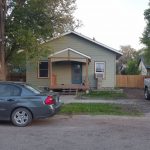 My niece, Kayla Stevens joined our family when she married my nephew, Garrett almost two years ago. In that time much has changed in Kayla’s life. When Kayla and Garrett met, she was living in Casper and going to college. They hit it off right away, and can thank Garrett’s sister, Lacey for introducing them, because they both knew that they had found their forever love. They lived next door to my mom, Collene Spencer, Garrett’s grandma for quite a while, much to the pleasure of many of her great grandchildren, who all loved to go see Kayla and Garrett, and who were always treated so well by both Kayla and Garrett, that the kids would have probably stayed for hours if their parents hadn’t made them come home. Kayla and Garrett love children, which is a well known fact to all who know them.
My niece, Kayla Stevens joined our family when she married my nephew, Garrett almost two years ago. In that time much has changed in Kayla’s life. When Kayla and Garrett met, she was living in Casper and going to college. They hit it off right away, and can thank Garrett’s sister, Lacey for introducing them, because they both knew that they had found their forever love. They lived next door to my mom, Collene Spencer, Garrett’s grandma for quite a while, much to the pleasure of many of her great grandchildren, who all loved to go see Kayla and Garrett, and who were always treated so well by both Kayla and Garrett, that the kids would have probably stayed for hours if their parents hadn’t made them come home. Kayla and Garrett love children, which is a well known fact to all who know them.
After Kayla completed her college, she began to look for jobs in her chosen field of Social Work. They knew they wanted to be either in Casper, where his family lives, or Sheridan, where her family lives, so she applied in these places, and they let the job offers decide where they would settle down and eventually raise a family of their own. When the best offer was in Sheridan, Kayla accepted and they moved to Sheridan. Her job at Wyoming Mental Health Clinic is going well. She started out on the substance abuse team, but now has been transferred to the child and family team, which is really where her heart is for sure. She has always love working with kids. Garrett found a job at Craftco Metals Service, where he is a welder, like his grandpa, Allen Spencer before him. Next they began the hunt for a home, finally settling on one they loved, and buying it last year. Immediately after buying their house, their family grew by one fur baby named Charlie.
Next, came the word that Kayla and Garrett were expecting a baby in the summer of 2018. In due time they announced the gender of their precious little one. Their daughter is due on August 22, and we are all very 
 excited for them. Their love for kids is finally going to be showered on a child of their own. Last weekend, my sister, Alena Stevens, Garrett’s mom; and his sisters, Michelle and Lacey threw a baby shower for Kayla, Garrett, and their daughter, whose name is yet to be announced. We may not know her name yet, but we all love her already, and she is all set with everything she will need when she arrives. These last few years have been filled with exciting new changes for Kayla, who is just living the sweet life. Today is Kayla’s birthday. Happy birthday Kayla!! Have a great day!! We love you!!
excited for them. Their love for kids is finally going to be showered on a child of their own. Last weekend, my sister, Alena Stevens, Garrett’s mom; and his sisters, Michelle and Lacey threw a baby shower for Kayla, Garrett, and their daughter, whose name is yet to be announced. We may not know her name yet, but we all love her already, and she is all set with everything she will need when she arrives. These last few years have been filled with exciting new changes for Kayla, who is just living the sweet life. Today is Kayla’s birthday. Happy birthday Kayla!! Have a great day!! We love you!!
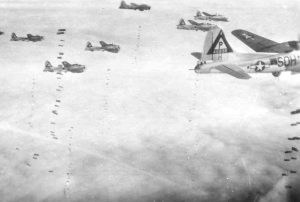 When a mistake is made in the air, it usually results in a disaster. Air disasters often involve the pilot, a mechanic, or an old part. Of course, some of the worst disasters were caused when an air traffic controller sent two planes to the same place at the same altitude. The resulting mid-air collision killed everyone on board. Mistakes are never good, but in the air they are especially devastating.
When a mistake is made in the air, it usually results in a disaster. Air disasters often involve the pilot, a mechanic, or an old part. Of course, some of the worst disasters were caused when an air traffic controller sent two planes to the same place at the same altitude. The resulting mid-air collision killed everyone on board. Mistakes are never good, but in the air they are especially devastating.
War is no different, in fact mistakes in war can be really disastrous. Gunners shooting at the enemy planes are often so focused that when the enemy flies past their own squadron, they can end up shooting down their own squadron members with friendly fire. 
The strange thing is that sometimes, a would be disaster ends up becoming one of the greatest miracles. Such was the case during World War II. The Americans planed a bombing run, and it was going to be a big bombing run. The orders had been issued. The problem…one squadron accidentally showed up thousands of feet lower down than the other one. In many cases, this would not have bee such a big problem, but both squadrons ended up a the drop site at the same time. The scheduled bombing began, and no one would really realize what was about to happen until it was too late.
Neither of the squadrons saw each other, until the bombs had been dropped. Miraculously, none of the lower planes were hit by the higher planes. It was a miracle of epic proportions. In addition, the Germans thought 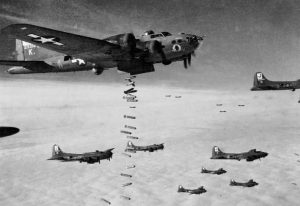 that the Allies had come up with an ingenious bombing strategy to bomb an area twice as much. After that bombing event, the Germans were scared that the Allies had this level of skill. It seemed completely impossible that they could plan a bomb run in which the lower planes flew in sync enough to allow the upper planes to drop their bombs in between the lower planes, while the lower planes were also dropping their bombs. It was impossible, and yet it happened. The impossible was achieved without one bit of planning. There is simply no other word for it. It was a miracle. God took a potential disaster and turned it into one of the greatest feats of warfare.
that the Allies had come up with an ingenious bombing strategy to bomb an area twice as much. After that bombing event, the Germans were scared that the Allies had this level of skill. It seemed completely impossible that they could plan a bomb run in which the lower planes flew in sync enough to allow the upper planes to drop their bombs in between the lower planes, while the lower planes were also dropping their bombs. It was impossible, and yet it happened. The impossible was achieved without one bit of planning. There is simply no other word for it. It was a miracle. God took a potential disaster and turned it into one of the greatest feats of warfare.
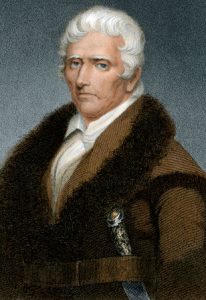 I grew up in a time when western shows were all the rage on television. One show that my family always watched was Daniel Boone. Most people know Daniel Boone from their history classes, as an American frontiersman. Most of his fame stemmed from his exploits during the exploration and settlement of Kentucky. Boone arrived in Kentucky in 1767, about 25 years before it became a state on June 1, 1792. He spent the next 30 years exploring and settling the lands of Kentucky, including carving out the Wilderness Road and building the settlement station of Boonesboro. Without Boone the history of Kentucky would have been much different.
I grew up in a time when western shows were all the rage on television. One show that my family always watched was Daniel Boone. Most people know Daniel Boone from their history classes, as an American frontiersman. Most of his fame stemmed from his exploits during the exploration and settlement of Kentucky. Boone arrived in Kentucky in 1767, about 25 years before it became a state on June 1, 1792. He spent the next 30 years exploring and settling the lands of Kentucky, including carving out the Wilderness Road and building the settlement station of Boonesboro. Without Boone the history of Kentucky would have been much different.
Boone was born near Reading, in Berks County, Pennsylvania, the son of hard-working but adventurous Quaker parents. He learned some blacksmithing, but had very little formal education. Daniel appears to have been a scrappy lad who loved hunting, the wilderness, and independence. When his parents left Pennsylvania in 1750 bound for the Yadkin valley of northwest North Carolina, Daniel went along willingly, because the move fit right in with his spirit of adventure.
Upon arriving in North Carolina, the cutting edge of the frontier, he was able to indulge his hunting prowess and love of the wilderness. In the years that followed, he served as a wagoner with General Edward Braddock’s ill-fated expedition to Fort Duquesne in 1755. Boone then married a neighbor’s daughter, Rebecca Bryan, in 1756, and in 1758 is believed to have been a wagoner with General John Forbes who was hacking out the road to Fort Duquesne, which he rebuilt as Fort Pitt…now Pittsburgh. Back in North Carolina, Daniel purchased land from his father but never seriously engaged in farming. He loved to roam far too much to settle down and farm the land in one place. In 1763 he and his brother Squire journeyed to Florida, but for unknown reasons they did not stay. I guess Kentucky would always be his first love.
Boone was first in eastern Kentucky in 1767, but his expedition of 1769-1771 is more widely known. With a small party Boone advanced along the Warrior’s Path into a beautiful garden-like region. When the time came for the party to return he remained behind in the wilderness until March 1771. On the way home, he and his brother were robbed by Indians of their deer skins and pelts, but the two remained exuberant over the land known as “Kentuck.”
So much did Daniel love that “dark and bloody ground” that he tried to return in 1773, taking forty settlers with him, but the Indians drove them back. The next year he went again into the region carrying a warning of Indian troubles to Governor John Murray Dunmore’s surveyors. As Judge Richard Henderson was concluding the Treaty of Sycamore Shoals. in March 1775, by which much of Kentucky was sold to his Transylvania Company, Boone was hacking out the Wilderness Road. As soon as he reached his destination, he began building Boonesboro, one of several stations, or forts under construction at that time. For the next four years…through 1778…Boone was a captain in the militia, and was busy defending the settlements. His leadership  helped save the three remaining Kentucky stations, Boonesboro, Logan’s (St. Asaph’s), and Harrodsburg. These were years of many ambushes; such as Blue Licks in 1778; captures, including Boone, himself, who was was captured but escaped from the Shawnees; rescues, and desperate defenses.
helped save the three remaining Kentucky stations, Boonesboro, Logan’s (St. Asaph’s), and Harrodsburg. These were years of many ambushes; such as Blue Licks in 1778; captures, including Boone, himself, who was was captured but escaped from the Shawnees; rescues, and desperate defenses.
I knew and have learned much about Daniel Boone over the years, but for me the most interesting thing I have learned is that Daniel Boone is my 5th Cousin 8 times removed, on the Pattan side of my mother, Collene Spencer’s family. It is a small, small world. Today is Daniel Boone Day. It is a day to remember all this great man did for our country.

